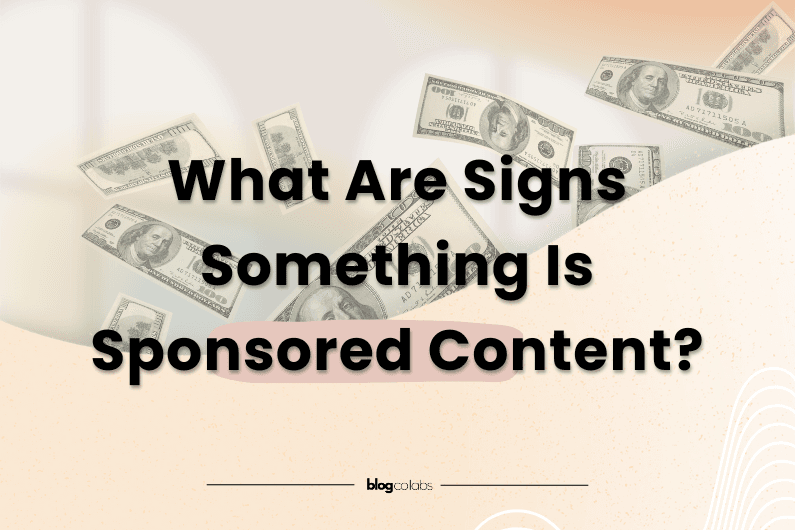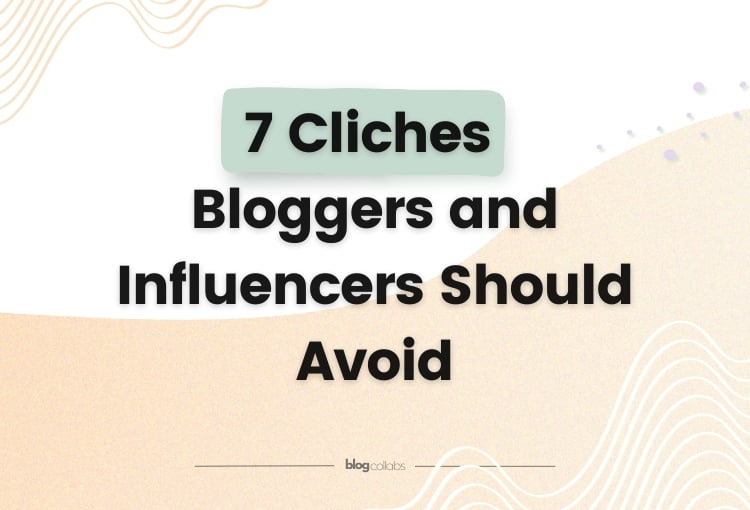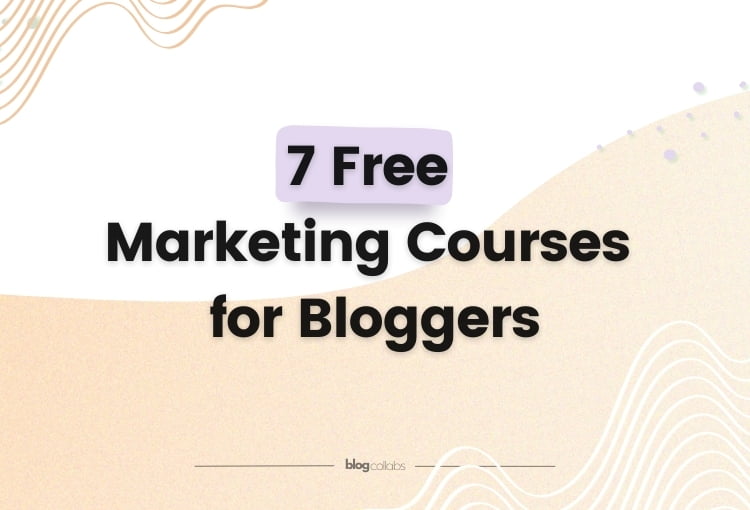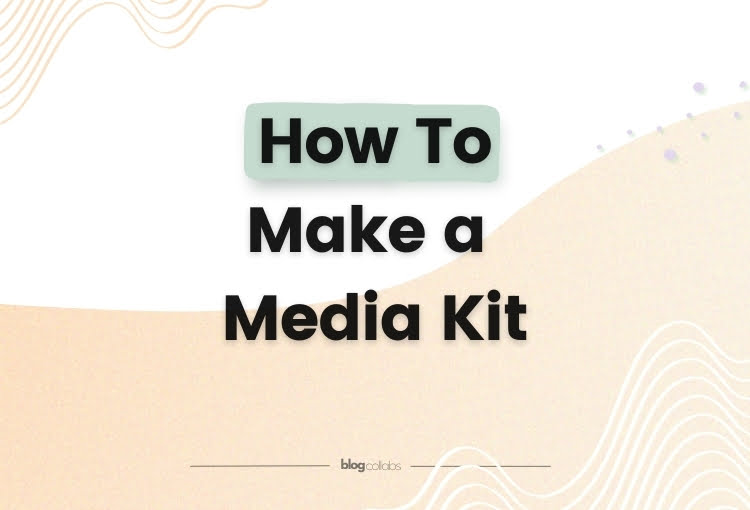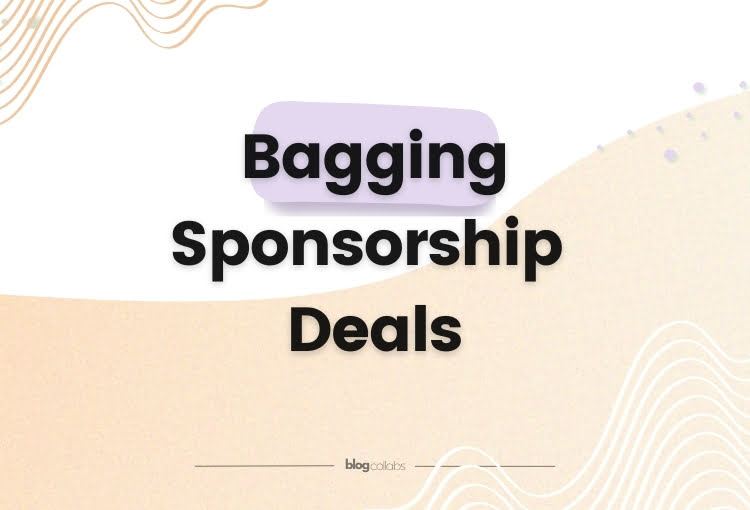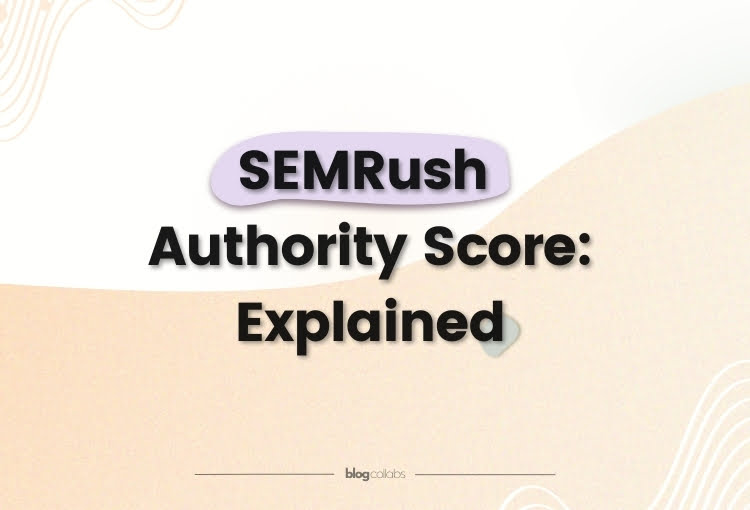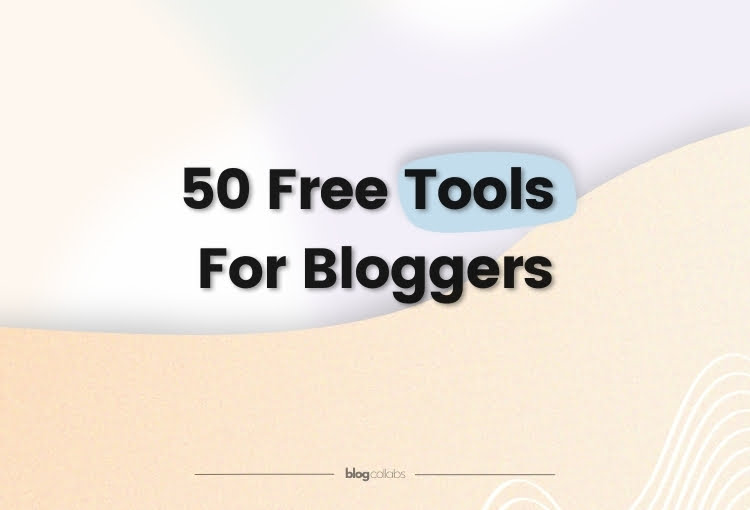What Are Signs Something Is Sponsored Content?
Nowadays, people are constantly coming in contact with influencer content across the digital space. Be it through blogs, social media, or in video content, it’s a great way for brands to reach niche audiences through voices that they trust. With the right authentic and highly-targeted messaging, it can be a great way to build a connection between a brand and its target market.
However, it is vital that brands and influencers are transparent. As such, one vital question to answer is how to tell if content is sponsored. I’m going to take a look at the way brands and influencers need to disclose sponsored content, and how audiences are able to recognise when they’re engaged with sponsored content to keep influencer marketing partnerships on the up-and-up.

- What Are The Signs Something Is Sponsored Content?
First and foremost, what signs indicate you’re looking at sponsored content? It’s important to ask this question because disclosure has become increasingly important over recent years. Regulations make it legally imperative that any ties involving compensation of any kind are made clear. As such, here are some of the signs you should keep an eye out for.
FTC/ASA Disclosure And Hashtags
The regulations mentioned above include the FTC and ASA’s guidelines on disclosure, which have recently made it mandatory to include signals, such as “#ad,” “#sponsored,” or phrases like “paid partnership with brand name.” It’s important to understand exactly what the requirements are in your region, as you may also be required to disclose the specific nature of compensation depending on where you are. These are best placed near the top or beginning of the content to avoid looking like you’re trying to hide them.
Direct Payment Or Compensation
First of all, any indication that the influencer or content creator has received any kind of payment or compensation is an obvious sign of sponsored content. This doesn’t just mean cash, but free products, travel, and services, as well, in exchange for coverage. Even perks like VIP access and gifted merchandise still apply. If there’s a benefit tied to promoting your brand, the content is likely sponsored and should be disclosed accordingly.
Links, Tags, And Calls To Action
Although not a replacement for disclosure, a lot of sponsored posts also include promotional links, discount codes, brand tags, and affiliate URLs. If an influencer includes a call to action, such as “click the link in my bio for a deal” or “use my code to get an exclusive discount,” it’s typically safe to say the content has been sponsored.
Brand Messaging And Talking Points
Although it’s usually wise to let influencers and publications have some editorial control over their sponsored content, many of them will include specific messaging or brand language that may vary somewhat from their usual tone.
- How To Tell If Content Is Sponsored
It’s important for brands that are working with influencers to understand how to tell if content is sponsored. Maintaining a level of transparency builds consumer trust and ensures that you’re compliant with advertising guidelines. Beyond the explicit disclosures, as mentioned above, we’ll look at some further indicators to keep an eye out for.
Product Placement
Even if the right disclosures are in place, within the content itself, sponsorship can sometimes be more overt than subtle. For instance, some influencers use subtle product placement, such as by wearing a brand’s apparel or featuring their products in the shots of photos and videos without making them a central part of the content.
Product Framing
The nature of sponsored content can be closer to an advertisement than a personal recommendation at times, and how the product is framed in the content can be a good showcase of just that. For instance, in a photo reel or video, you should watch for products featured from multiple angles, have their logos shown clearly, or have their names repeatedly dropped throughout.
Consistency Across Channels
If a creator or influencer features a brand across multiple platforms, such as their blog, Instagram, YouTube, and TikTok, then there’s likely to be an ongoing collaboration behind it, as well. Repeated product mentions, even when not in ads, could be a sign of sponsorship. Of course, in keeping with the regulations, influencers should disclose their sponsorship any time they mention the brand. It’s not enough to mention it in the first instance, but then neglect to with every post after that.
Posting Patterns Match The Brand’s
With a well-coordinated campaign, an influencer’s sponsored posts should have their own personality and creativity, but they might still align with the brand’s internal marketing efforts. This is most often seen in the posting schedule of said content. If an influencer is talking a lot about a brand at the same time that the brand has a launch campaign or the like going on, then there is likely to be a sponsorship connection there.
Platform Requirements
Aside from the legal requirements for disclosure as mentioned above, platforms also tend to have their own rules for disclosure, as well. For instance, Instagram requires disclosure in both the caption and the Paid Partnership tool, while YouTube and Twitch both demand a checkbox for sponsored content and verbal disclosure in videos. These requirements typically ensure that sponsorship disclosures are placed prominently in the content itself.
Knowing the signs of sponsored content can help brands ensure that influencers are following all the necessary guidelines to maintain transparency and ethical partnerships.
- Key Characteristics Of Sponsored Content
Aside from the signals that make it clear that an influencer or content creator is working with a sponsor, there are other aspects of sponsored content that you may want to make sure that your campaign includes. What are the characteristics of sponsored content that can make said content even more effective? Let’s take a look at some.
Authentic Influencer Integration
All content should feel specific and unique to the influencer’s existing voice and style. You should aim for posts that look and sound like their usual content, rather than a script. Being able to weave a product or service seamlessly into their typical life and narrative can help the message feel much more genuine, regardless of any necessary disclosures. Above all else, you should avoid anything that feels out of character or forced, as audiences tend to pick up on that pretty well.
Content That Tells A Story
Why is sponsored content so powerful? Aside from offering you access to an influencer’s audience, it also gives you the opportunity to frame your products and services from a new perspective. You can tell a story, rather than deliver a pitch. Narrative in content offers context, emotion, and a relatability that allows the viewer to put themselves in the influencer’s shoes. This takes advantage of the connection that the influencer has already built, making connections to products feel more personal and meaningful.
Value-Focused Messaging
While you want to avoid simply listing off the features and benefits of your products, sponsored content should still lead with the value offered by your products and services. From solving a problem to answering a question, the content should address a need, and then highlight how the featured product can serve that need even further. Practicality tends to be the name of the game, but lifestyle products can get more aspirational with their value, as well, showing how a brand can help the influencer, and thus the audience, maintain a certain lifestyle or aesthetic.
Compelling Calls To Action
For longer-term campaigns, you may want to occasionally delay the call to action to ensure that influencer followers are more fully engaged with the narrative before breaking their immersion. However, all sponsored content should guide the audience to the next step, whether it’s simply continuing to watch the next part of the series or checking out a product further. They should be direct without being pushy, such as “learn more,” “try this trick,” or “see how it worked for me.”
- Why Sponsored Content Matters
Ensuring that you’re following the tips above to disclose any partnerships with your creatives isn’t just about checking boxes for compliance. Why does it matter if it is sponsored content? Because modern customers expect some degree of clarity and responsibility from brands. The points below show how and why.
Transparency Is Key
Authenticity is becoming more and more valuable to both brands and their audiences in the age of modern marketing. As such, disclosing sponsored content is vital for building their trust. Most people are aware that influencers rely, in some part, on sponsorships to keep producing content, but they’re a lot more accepting of the fact when it’s presented honestly. Clearly marked sponsored posts signal a degree of integrity, while undisclosed sponsorships can damage not only the influencer’s credibility but the brand’s reputation, as well.
Compliance Is Mandatory
There has been a recent shift in the advertising world as authorities around the world, like the US’s FTC, the UK’s ASA, and others, have started to lay out clear guidelines on what kind of sponsored content requires disclosure and what kind of disclosure is required. Beyond a reputational hit, noncompliance can now lead to fines and even forced removal of content. While influencers may be the ones to click the “post” button, brands can be held accountable for their behaviour, so it’s important to be vigilant in managing those influencer relationships.
Building A Professional Industry
The progression from simple, independent online creatives to potential marketing partners has been a gradual and not-always-clean path for influencers. There will always be those who don’t want influencers to do any kind of paid content, but it’s becoming a market reality, so the best way to address it is to disclose it. Influencers who do disclose are showing responsibility and respect both to their audiences and the brands that they work with. This helps to make influencer marketing and sponsored content part of the norm of the industry, and also helps foster stronger, longer-lasting relationships.
Becoming A Standard Bearer
If brands are looking to build trust, integrity, and a deeper connection with their audiences, then they should be among the first to lead by example in the new age of disclosure. By making transparency a priority, it sets a higher standard across the industry, signalling to creators, competitors, and consumers that your brand values honesty and ethical marketing.
- The Effectiveness And Value Of Sponsored Content
How effective is sponsored content? One simply has to look at how many brands are taking part, and we’ll take a closer look at some examples later for just that purpose. Beyond that, it’s not difficult to see how sponsored content has become one of the most effective tools in the hands of modern marketers. Let’s explore some of those benefits.
Telling Authentic Brand Stories
As mentioned, one of the best characteristics of sponsored content is that storytelling is powerful, indeed. Influencer content tends to be shaped more by personal experiences, opinions, and creative expression, which is a lot more likely to resonate with people than product pitches and feature lists. Stories feel emotionally true, which helps the audience form better connections with the brands and products behind them. Influencers who already have the trust of their followers can act as a catalyst for this connection.
High Engagement Rates
Influencer content can result in higher engagement than standard brand advertising. This is because influencers tend to have a more engaged audience at the ready, already liking, commenting, and sharing their posts. To benefit from this, it’s important to make sure that sponsored posts are well-integrated and match the influencer’s existing style as best as possible. The reach that influencers offer can make sponsored posts a very attractive offer for brands.
Highly Targeted Reach
It’s not just that sponsored content allows you to reach more people; it also allows you to be a lot more specific with who, exactly, you’re reaching. Influencers can offer a direct line to specific demographics and lifestyle niches, be they Gen Z beauty product lovers, fitness-minded millennials, budget-conscious mums, or otherwise. Choosing and working with the right influencers can give your brand access to highly focused communities, making sure your message reaches precisely those it’s likely to be most effective with.
Boosts Your SEO
Search engine optimisation is another widely used tool in the modern marketer’s arsenal, and influencer content can greatly benefit from it. When influencers feature brands on their blogs or YouTube channels, those pieces can remain live and searchable for months, if not years. This can boost a brand’s long-term discoverability, which can be even more valuable if they have backlinks to your website. This, in turn, can greatly improve your site’s authority and help it rank higher in search results.
- Examples Of Sponsored Content
Hopefully, you should have a good idea of the answers to questions like “what are signs something is sponsored content?” and why it’s worth investing in, in the first place. By working with the right trusted influencers, bloggers, and media outlets, brands can take part in a narrative that ties them much more deeply to the wants and needs of their target market, and this has been done to great success before. Here, we’re going to look at some prime sponsored content examples.
BuzzFeed & Cancer Research UK: “Sunbathing: Expectation Vs. Reality”
This partnership saw the site producing a humour-driven listicle that, while entertaining, also met the goal of getting across a serious message about the danger of UV exposure and the importance of sun protection in preventing skin cancer. It’s a perfect example of how brand goals can be aligned with a new audience, even in a nonprofit setting.
Vice & Mountain Dew: Julia Marino Interview
Another high-profile case saw the soft drinks brand sponsor a long-form interview with Olympic snowboarder Julia Marino. While largely focused on Marino’s achievements and life experience, Mountain Dew’s long-term ties to extreme sports culture helped to establish their brand’s connection to the space even further.
Scientific American & Takeda Pharmaceuticals: Discrimination Is Breaking People’s Hearts
The Japanese multi-national pharmaceutical company sponsored this in-depth look at the role of discrimination and inequality in heart health conditions. It used valuable insights and research findings to not only show Takeda as a thought leader in the space but also demonstrate the brand’s commitment to public well-being, as well.
Tastemade & Michelob ULTRA: Culinary Video Series
The light beer company partnered with this online food and lifestyle streaming channel, showcasing a host of recipe videos that paired their meals with beer, such as chicken and rice stuffed shells, integrating product placement well within the main value of the video: delivering recipe and serving advice.
Tarte Cosmetics: #Trippinwithtarte Influencer Trip To Dubai
The cosmetics brand launched one of the more famous (and infamous) influencer campaigns with a luxurious trip to Dubai for a host of nearly 50 beauty and lifestyle influencers as part of the launch campaign of a new foundation, including Alix Earle, Meredith Duxbury, Monet McMichael, and Xandra Poh. While the campaign certainly did get a lot of attention and frame the brand as one associated with opulence, it also generated some controversy, showing the importance of considering the aesthetics of sponsored content.
Glossier & Into The Gloss: Skin Care Routine Series
A little different from some of the sponsored posts mentioned above, this series was posted on Into The Gloss, a skincare and beauty blog produced by beauty brand Glossier itself. Featuring posts from staff members within Glossier, it detailed breakdowns of skincare routines, often finding a way to highlight products without having to rely on overt sales pitches. The natural integration of the brand’s products helped them maintain some authenticity, despite ostensibly being set up by the brand itself.
Fashion Nova & Bretman Rock
The fashion house paired up with beauty and lifestyle influencer Bretman Rock, with a series of matching outfit posts, which subtly layered the brand into his usual heartfelt and personally focused style of posts, but still with all the essential disclosures to ensure its sponsored status would be clear.
Nerf & Zack King
One of the most creative examples of a sponsored post led by the influencer’s style is this Instagram video that used the popular illustration and filmmaker’s signature visual effects to promote the toymaker’s products to great effect, reaching over three-quarters of a million people.
There are plenty more examples of sponsored content to keep an eye out for, and it’s worth picking up on the trends, as well as what lessons you can learn from them. From those above, for instance, some key takeaways include:
- The importance of transparency, with clear disclosures, in maintaining audience trust.
- How the content should have value to the viewer in and of itself, beyond product placement.
- The power of diverse formats, including blogs, videos, podcasts, Instagram posts and more.
- Aligned values can improve the impact of any brand’s sponsored posts.
By studying and applying the principles you learn from the sponsored posts you catch in the wild, brands can craft sponsored content that connects and engages, leading to better promotion.
Explore The Versatility And Impact Of Sponsored Content
When you’re wondering what a sponsored content article can contain, hopefully, I’ve shown that you can take them in all manner of directions. This powerful marketing tool is consistently evolving in the hands of forward-thinking brands and unique influencers, allowing them to connect with modern brands in a way that builds authenticity, trust, and a personal connection.
Here, we’ve looked at how it’s important to be able to outline sponsored content, how you can recognise it, its value, and some real-world examples that you can take some notes from. The takeaway from all of this should be clear: good influencer marketing demands visibility, clarity, and responsible partnership. The sponsored content label might seem like a barrier between you and the connection you want with your audience, but by executing it with nuance and creativity, building stronger marketing campaigns and long-term audience loyalty is possible.
You can start to explore the power of these influencer collaborations by signing up at Blog Collabs today and start building the partnerships that drive real results.
